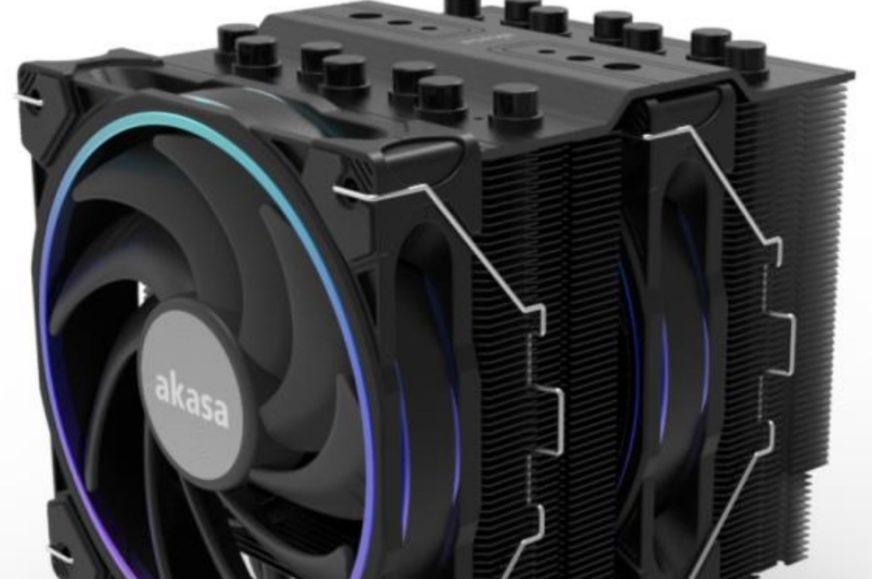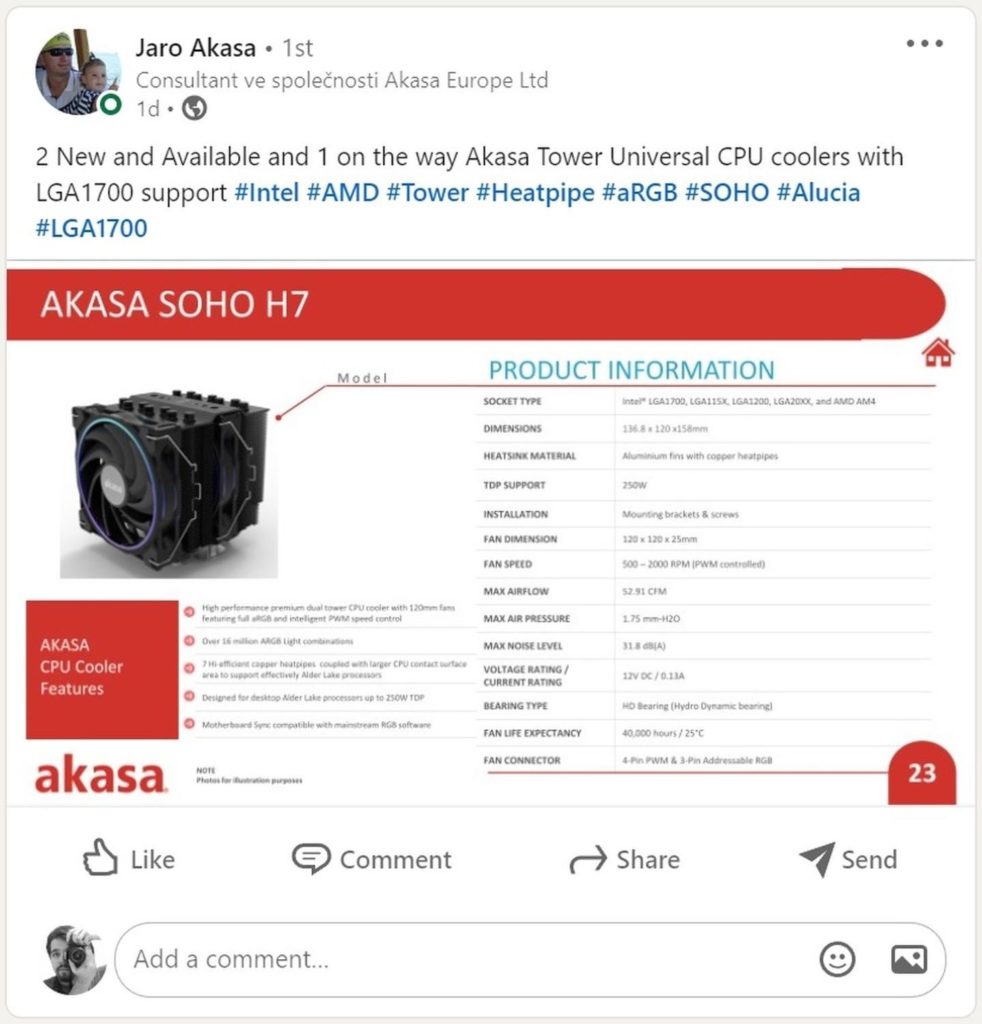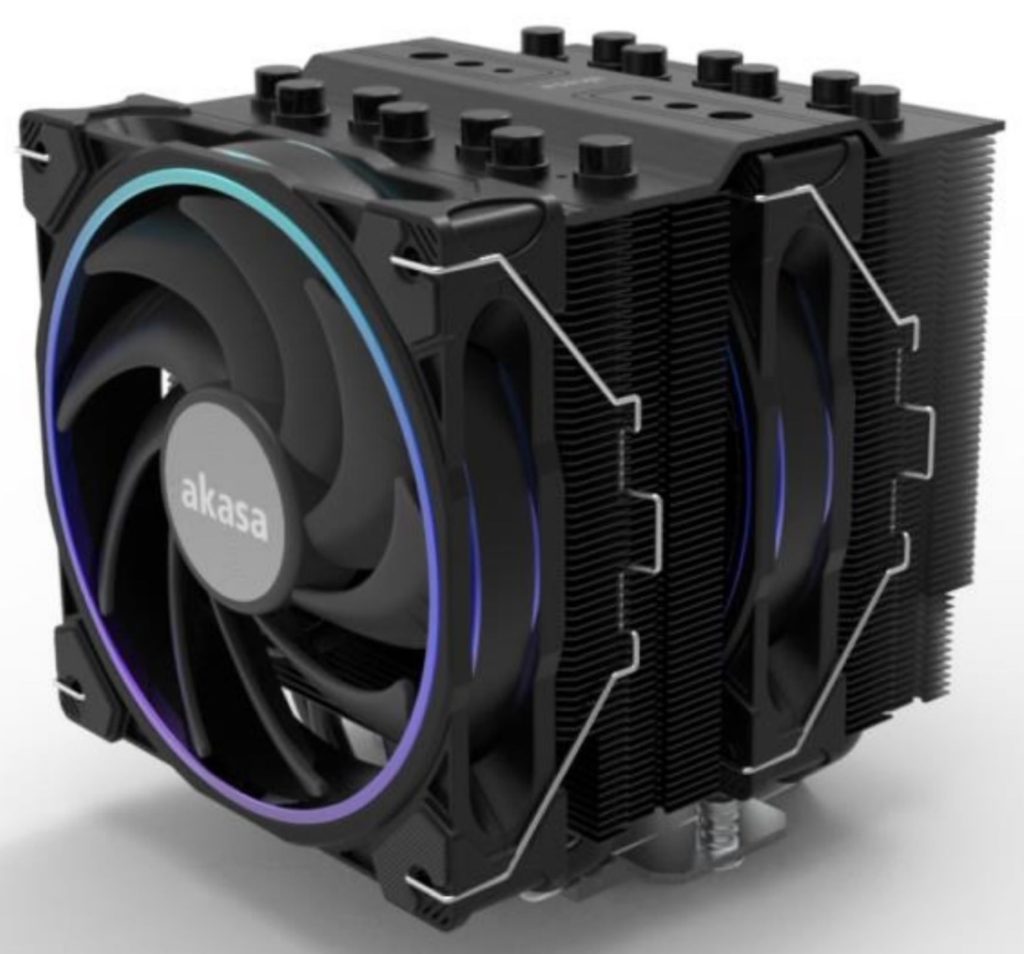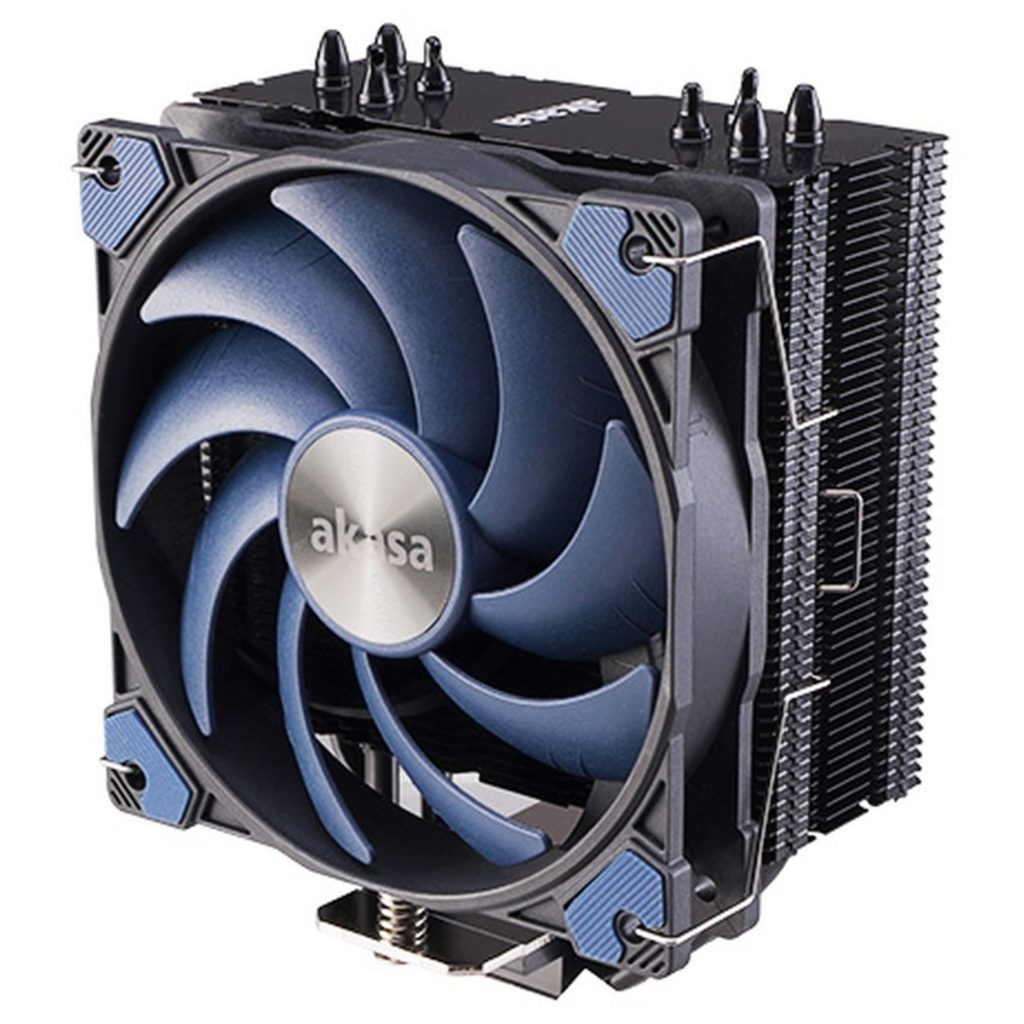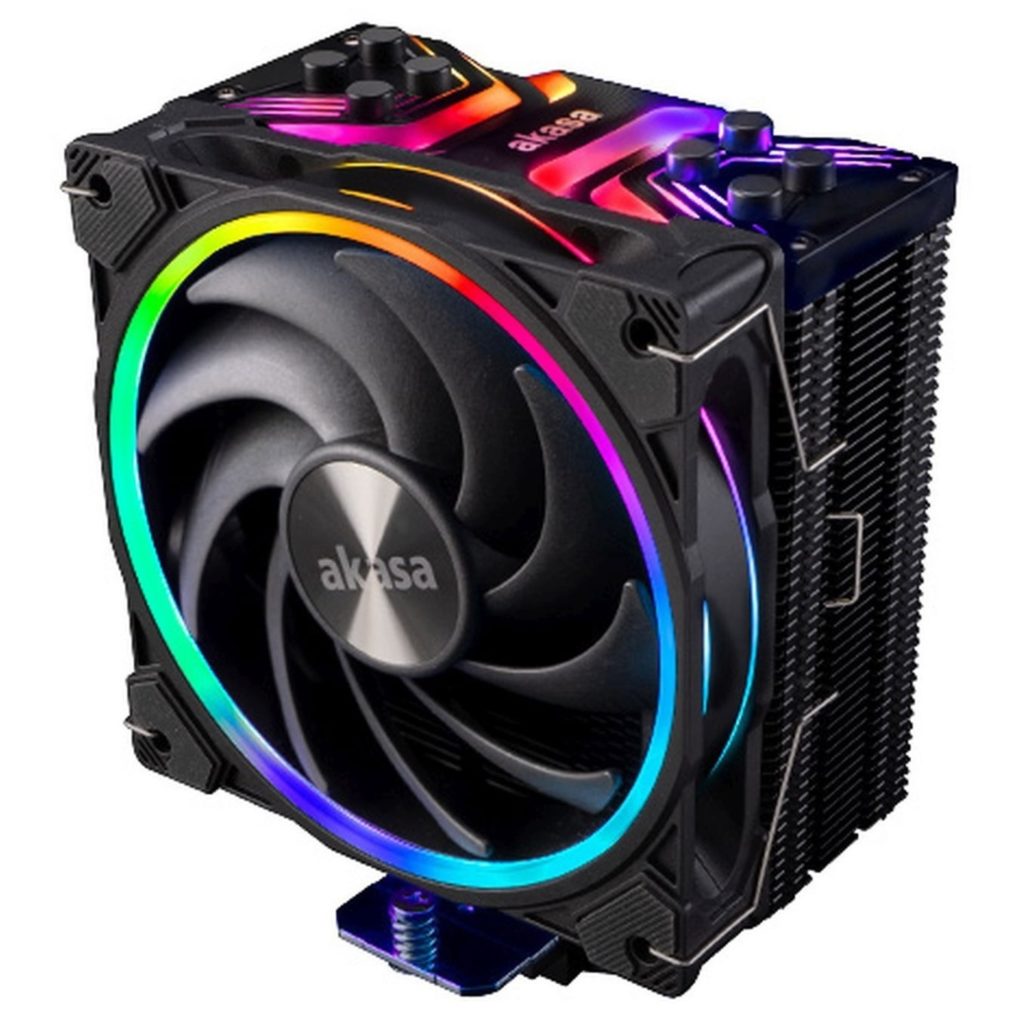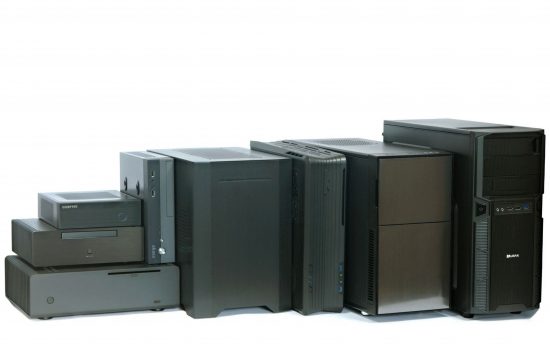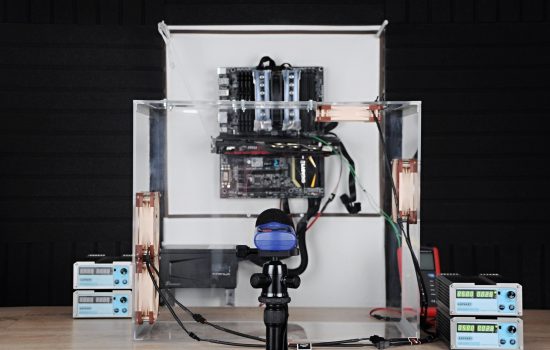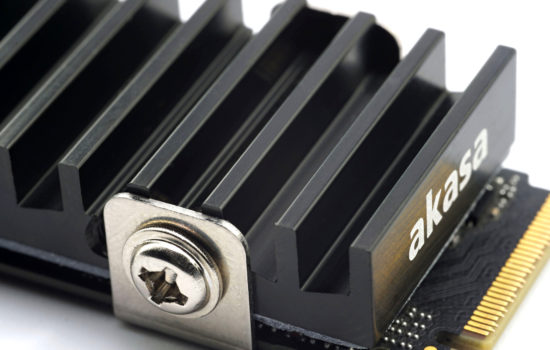Two finned Akasa towers and extended Intel LGA 1700 support
To celebrate the launch of the Akasa Alucia H4 and Soho H4 coolers with Plus attributes (i.e. finally with LGA 1700 support), the chunky dual-tower cooler was also featured in one image. All its parameters are already known. After a very long time, the most powerful Akasa cooler to date – the Venom Medusa model – will see a successor. Akasa’s materials state that this cooler is optimized for the most powerful Intel Alder Lake processors.
One of Akasa’s representatives on LinkedIn published a post with an attachment that includes, among other things, a complete product datasheet for the Soho H7 CPU cooler. Akasa hasn’t officially unveiled that one and added it to their website yet, but we can guess that they will do so in the foreseeable future.
The Soho H7 is likely to replace the old Venom Medusa as Akasa’s most powerful tower cooler. You can also find Venom Medusa cooler test results in our comprehensive test database of 80 coolers. In its time, the Venom Medusa was in the top 15 in terms of performance, above the Noctua NH-D14. While it’s true that it’s also due to its greater noise, at equal, lower noise, this cooler is ranked worse, leaving the Soho H7 with a lot of room for possible improvement.
The new Soho H7 is a bit shorter in each axis, compared to the Venom Medusa with dimensions of 158 × 137 × 120 mm (height/length/width), by 5–10 mm. Akasa seems to have increased the efficiency of using the available finning area, but, of course, it’s not certain whether the Soho H7 will be better off performance-wise. The Soho H7 has one less heatpipe compared to the Venom Medusa cooler (7 in total), but that may not be an important indicator. Wide bases with eight heatpipes are no longer in contact with the CPU IHS in one row and so their contribution is quite small. That means that even if the thermal performance of the Soho H7 is lower than that of the Medusa, it may be more efficient for current CPUs.
Among the main points Akasa writes about optimization for Alder Lake processors with TDP up to 250 W. This means that the cooler can handle the Core i9-12900K in boost without power limits, although the operation will probably be noisier.
The Soho H7’s heatsink is cooled by two 120 mm Soho AR fans with a claimed airflow of up to 89.89 m³/h at a static pressure of up to 1.75 mm H2O. The speed range of the fans is wide, 500–2000 rpm. The fans have hydrodynamic bearings and the MTBF has been set at 40,000 hours by Akasa.
Among the supported platforms is also Intel LGA 1700, similar to the Akasa Alucia H4 Plus and Akasa Soho H4 Plus coolers, which, unlike the Soho H7, Akasa already has on offer. The difference compared to variants without “Plus” in the name is not only in LGA 1700 support (Soho H4 and Alucia H4 do not yet support the LGA 1700 platform), but also a bit in dimensions. The new Alucia and Soho H4 coolers with Plus in the name are 3–6 mm lower (6 mm refers to the Alucia H4 Plus, which should be lowered to 148 mm, down from the original 156 mm) and 4 mm slimmer (92 mm).
The thermal output of the Alucia H4 Plus and Soho H4 Plus is supposed to be 185 W. The main difference is in the presence of lighting. The fan and the ARGB LED elements (these include the LED light bar on the top cover of the heatsink) only apply to the Soho H4 Plus cooler. The Alucia H4 Plus has no lighting and, by the way, uses the Alucia SC12 fan that we recently analyzed in tests.
Akasa Alucia H4 Plus and Akasa Soho H4 Plus single tower coolers are already in stores. Alucia H4 Plus with a price of around 46 EUR and Akasa Soho H4 Plus is more expensive, starting at 60 EUR.
English translation and edit by Jozef Dudáš





